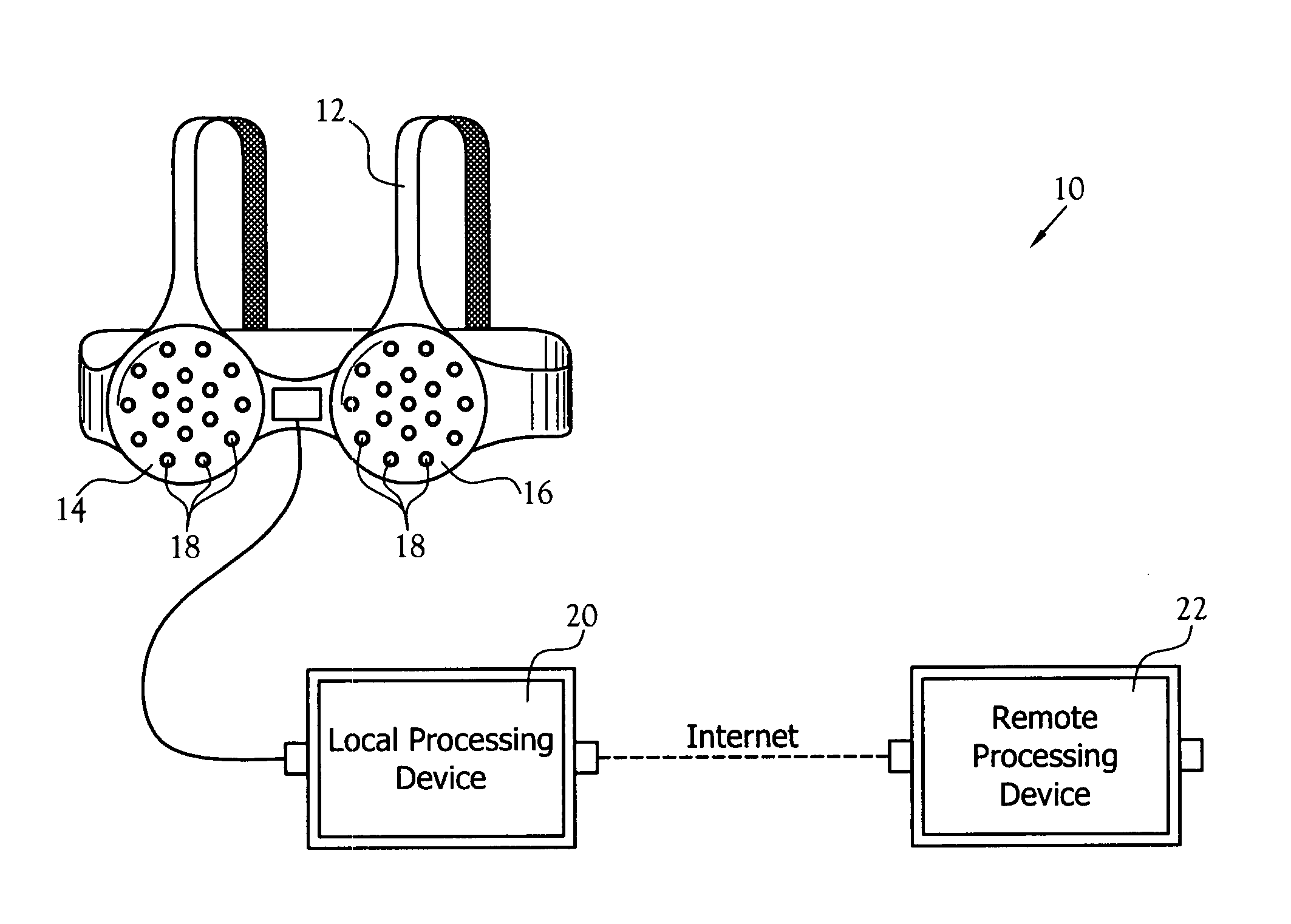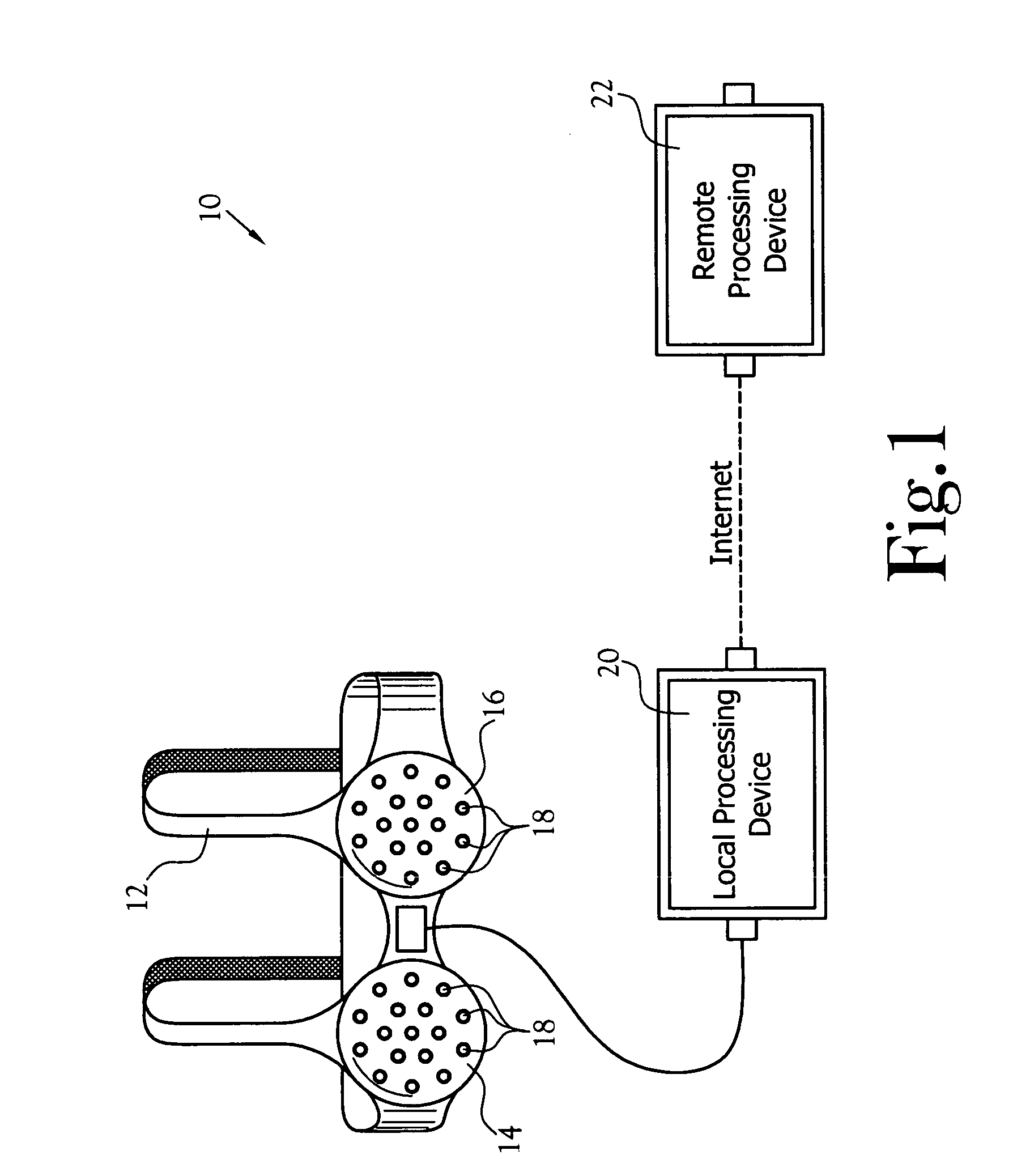Ultrasonic sensor garment for breast tumor
a breast cancer and ultrasonic sensor technology, applied in ultrasonic/sonic/infrasonic image/data processing, applications, tomography, etc., can solve the problems of introducing an additional degree of difficulty for a woman, abnormal tissue development has progressed past its primary stages, and the method of palpation is limited, so as to prevent the development of a fatal cancerous tumor and increase the probability of a successful treatment
- Summary
- Abstract
- Description
- Claims
- Application Information
AI Technical Summary
Benefits of technology
Problems solved by technology
Method used
Image
Examples
Embodiment Construction
[0031] One embodiment of a cancer detection system constructed in accordance with the various features of the present invention is illustrated generally at 10 in FIG. 1. The cancer detection system 10 utilizes ultrasonic technology for gaining information regarding the tissue development of a female breast. The illustrated embodiment of the cancer detection system 10 includes a portion that is used within the home and that communicates with a remote portion by way of the Internet. The cancer detection system 10 stores all information from the periodic examinations of a particular patient and builds a chronological profile of her breast tissue development. If a localized tissue abnormality becomes apparent, proper action is taken to determine if the abnormality is the early development of a cancerous tumor. Because the cancer detection system 10 detects abnormal tissue development in its primary stages, if a cancerous tumor is found, an immediate treatment will greatly increase the p...
PUM
 Login to View More
Login to View More Abstract
Description
Claims
Application Information
 Login to View More
Login to View More - R&D
- Intellectual Property
- Life Sciences
- Materials
- Tech Scout
- Unparalleled Data Quality
- Higher Quality Content
- 60% Fewer Hallucinations
Browse by: Latest US Patents, China's latest patents, Technical Efficacy Thesaurus, Application Domain, Technology Topic, Popular Technical Reports.
© 2025 PatSnap. All rights reserved.Legal|Privacy policy|Modern Slavery Act Transparency Statement|Sitemap|About US| Contact US: help@patsnap.com



